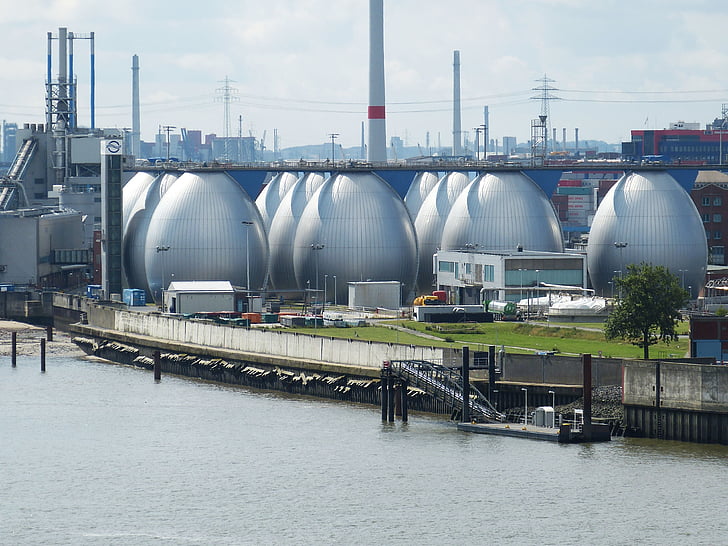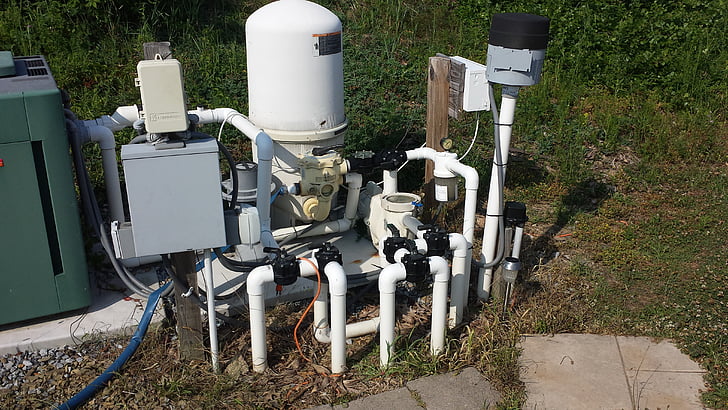Water treatment is of high priority in environmental protection. Considering the water treatment process, it is impossible to deny the importance of aerators: the highly important equipment for oxygenation and mixing tanks. At the same time, certain drawbacks of traditional aerators push us to continue searching for something more effective, reliable, and friendly to nature.
In recent years, permanent magnet direct drive motors, as the emerging technology applied in the field of aerators, brought a sea change to it. It will give an overall understanding of the transformation of permanent magnet direct drive motors in aerators and some advantages thereof that will help this industry with better utilization of advanced technology for improving efficiency in water treatment with sustainable development.

Traditional aerators convert electrical energy into mechanical energy with the use of an electric motor, coupled to a mechanical gear or belt transmission system. The mechanical energy drives a fan or impeller to cause oxygenation and mixing in water bodies. The basic operation principle is that the turning of the fan or impeller draws air or oxygen into the water, which enables oxygen to dissolve and distribute uniformly.
Importance in Water Treatment
Traditional aerators are very important in the field of water treatment. They maintain the required oxygen levels in water, which is vital for the survival of aquatic life and the efficient treatment of wastewater. The aeration process ensures that water remains clean and safe, therefore making traditional aerators indispensable in various water treatment facilities.
Overview of Limitations
Despite their importance, traditional aerators have several limitations to their efficiency and effectiveness. These include high energy consumption, noise problems, and maintenance challenges. These issues need to be addressed to improve the performance of aeration systems further.
Energy Consumption
Energy Losses in the Transmission System
In all conventional aerators, the major share of input energy is lost in the transmission systems. The conversion of electrical energy into mechanical energy and transmission of this energy to actuate the fan or impeller involves several stages. Mechanical friction and transmission losses take their share at each of these steps.
Mechanical Friction and Transmission Losses
There is more energy inefficiency brought about by the mechanical friction within the gears, belts, and other transmission components. The effect of friction here results in heat and wear, both causing wastes of extra amounts of energy.
Inefficiency in Energy Conversion
This translates to an overall high level of energy use since the set-up is not optimized for these minimal losses, thus increasing operation costs with the traditional aeration systems.
Design Issues with Fans or Impellers
In most aerators, the design issue relating to fans or impellers is one of the major reasons for excessive energy consumption.
Excessive Airflow Creation
The fans or impellers generate too much airflow, which is not necessarily translated into oxygenation efficiency. This over-generation of airflow results in the wastage of energy.
Oscillation Problems
Further inefficiencies due to the disturbance in the aeration process can be caused by such oscillations produced by these revolving fans or impellers. Additionally, the oscillations lead to greater wear and tear of the equipment; this also increases energy dissipation.
Increased Energy Consumption
All these factors taken together cause very high energy consumption, thus making conventional aerators extremely uneconomical and costly.
Noise Problems
High-Speed Rotation of Fans or Impellers
Traditional aerators are characterized by large, high-speed rotations of either fans or impellers, producing extremely high levels of noise. The noise is strictly a by-product of the mechanical action, which can be quite loud in many cases, especially for large systems.
Noise Pollution Issues
Noise given off by traditional aerators contributes to noise pollution, which is an important concern in residential areas or places where quiet environments are required. The continuous running of such aerators results in permanent noise problems.
Impact on Surrounding Residents
Residents near the water treatment facilities or other sites with conventional aerators experience high levels of noise. The noise can interfere with the quality of life for these residents and result in complaints, thus causing possible regulatory issues for the operators of the facilities.
Maintenance ProblemsThe presence of Mechanical Drives and Components
Conventional aerators incorporate mechanical drives and various kinds of parts, such as fans or impellers. These are susceptible to wear and tear and hence require regular maintenance.
Regular Servicing and Replacement Needs
This need for frequent servicing and replacement of mechanical parts contributes to high maintenance. Parts like gears, belts, and bearings have to be periodically inspected and replaced to ensure smooth operation in the future.
Increased Maintenance Costs
Higher maintenance costs are due to the need for frequent maintenance and component replacement. The costs associated with maintenance activities also include the price of parts, as well as labor and lost time.
Production Line Downtime
The aeration system needs to be shut down during most maintenance activities, which results in downtime on the production lines. Downtime affects the continuity of the water treatment process and reduces overall efficiency.
Reduction in Work Efficiency
The cumulative effect of frequent maintenance and downtime results in work efficiency reduction. Retarding or even halting the water treatment process would have negative consequences on the facility’s capability in meeting its realization of certain standards of treatment goals and standards of water quality.
Conclusion
Summary of Limitations
Some of the major disadvantages of conventional aerators include the following: high energy consumption due to inefficiencies and design flaws, noise pollution problems, and considerable maintenance challenges. These altogether affect the overall performance and cost-effectiveness of conventional aeration systems.
Necessity for More Efficient, Reliable, and Environmentally Friendly Aerator Solutions
Against the backdrop of such setbacks, there is a very clear need for developing and using various more efficient, dependable, and environmentally friendly aerator solutions. The disadvantages described in this paper can be conquered only through the continuous evolution of technologies and design. Improved aeration efficiency with a lower noise level and low maintenance are achievable with an upgraded design. All this not only improves water treatment processes but also supports sustainability and lower operational costs.
Simple Structure
Composition of Permanent Magnet Direct-Drive Motors
The permanent magnet direct-drive motor system consists of an electric motor directly connected to a fan or impeller. The lack of cumbersome transmission devices, as used in the older types of aerators, streamlines the design.
Elimination of Traditional Transmission Devices
The lack of gears, belts, and other transmission devices greatly simplifies the structure of the system. With fewer mechanical parts, the chances of mechanical failures decrease, hence simplifying maintenance.
Simplification of System Structure
Smaller size and weight reduce installation and operational workload and improve reliability.
Fast Response Speed
High Response Speed of Permanent Magnet Direct-Drive Motors
A permanent magnet direct-drive motor is equipped with a high response speed capable of changing promptly the fan or impeller in operation. The fast response capability is an important factor in satisfying a variety of demands in operation.
Quick Adjustment of Fan/Impeller Speed
Consequently, it can quickly change the speed of the fan or the impeller. This capability allows for accuracy in setting the aeration process accordingly for optimum performance in various working conditions.
Adaptability to Different Working Conditions
Fast response capability greatly makes these motors very compatible to work effectively under most of the working conditions or demands given.
Low Noise
Reduction of Noise Due to Elimination of Transmission and Mechanical Friction
Permanent magnet direct-drive motors remove the transmission devices, minimizing mechanical friction and largely reducing the noise. This is quite a striking advantage compared with traditional aerators.
Comparison of Noise Levels with Traditional Aerators
The old, traditional aerators are loud in their operation due to the presence of mechanical drives and the high-speed rotation of fans or impellers. For this motor type, though, the silence is unmatched and allows for a friendlier work atmosphere.
Environmental Impact of Reduced Noise
This reflects very well on the environmental impact of such aerators, especially in residential or sensitive areas where noise can be a great issue. Thus, it increases the acceptance and usability of the aeration system.
Low Maintenance Costs
Minimal Need for Component Replacement
Because the design of permanent magnet direct-drive motors is so minimalistic, fewer components are regularly required for maintenance or replacement, lowering the overall maintenance burden.
Reduced Maintenance Costs
There is considerably reduced maintenance due to fewer parts that are serviced and replaced. Therefore, reducing maintenance costs stands out as a major operating benefit.
Decreased Downtime
The reduced maintenance contributes to decreasing system downtime; therefore, the aeration system operates more with a gaining efficiently.
Longevity and Reliability of the System
The robust design of permanent magnet direct-drive motors increases the life and reliability of the aeration system, thereby further reducing the long-term operating cost.
Improved Energy Efficiency
Elimination of Transmission Losses
By directly driving the fan or impeller, permanent magnet direct-drive motors eliminate the transmission losses associated with conventional systems. The direct approach in their work ensures that more electrical energy is converted to useful mechanical energy.
Higher Efficiency in Converting Electrical Energy to Mechanical Energy
The higher energy conversion efficiency of such motors automatically leads to reduced energy consumption and operating costs, hence a more sustainable and economically viable aeration process.
Environmental Benefits of Increased Energy Efficiency
Increased energy efficiency means reduced environmental impacts since lesser energy consumption implies reduced greenhouse gas emissions and a smaller carbon footprint.
Enhanced Aeration Performance
Efficient Oxidation and Mixing in Wastewater Treatment
Permanent magnet direct-drive motors make the processes of oxidation and mixing effective during wastewater treatment, resulting in a better aeration effect and quality of water.
Improved Treatment Effect and Water Quality
With increased efficiency in aeration, improved treatment effect, better classes of treated water, and hence better aquatic ecosystem health, this means there is a.
Promotion of Rational Use of Water Resources
These motors optimize the aeration process, thus contributing to the rational and sustainable use of water resources, in line with broader environmental and conservation objectives.
Practical Applications and Results
Successful Applications in Wastewater Treatment Plants
Permanent magnet direct-drive motors have been applied to a large number of wastewater treatment plants and proved their practicality and effectiveness in actual operation.
Case Studies and Examples of Improved Performance
Case studies and examples of various installations highlight the huge gains in performance, efficiency, and cost savings with permanent magnet direct-drive motors.
Positive Impact on Productivity and Operating Costs
The increased productivity and reduction in operating costs from water treatment facilities have made these motors very valuable and their use widespread.
Enneng, a permanent magnet motors provider from China, spent years and efforts on R&D with many special series of high and low voltage Low-Speed High Torque permanent magnet motors, Constant speed permanent magnet motors, special direct-drive permanent magnet motors, etc. ENNENG’s series of permanent magnet motor products apply widely in Chinese famous enterprises of many industries. Please feel free to contact us.

According to the analysis of the application and transformation of a permanent magnet direct drive motor in an aerator, its application in the field of aerators has caused a remarkable transformation of traditional aerators. The efficiency in energy utilization eliminates energy loss through a traditional transmission device, thus enhancing energy use efficiency.